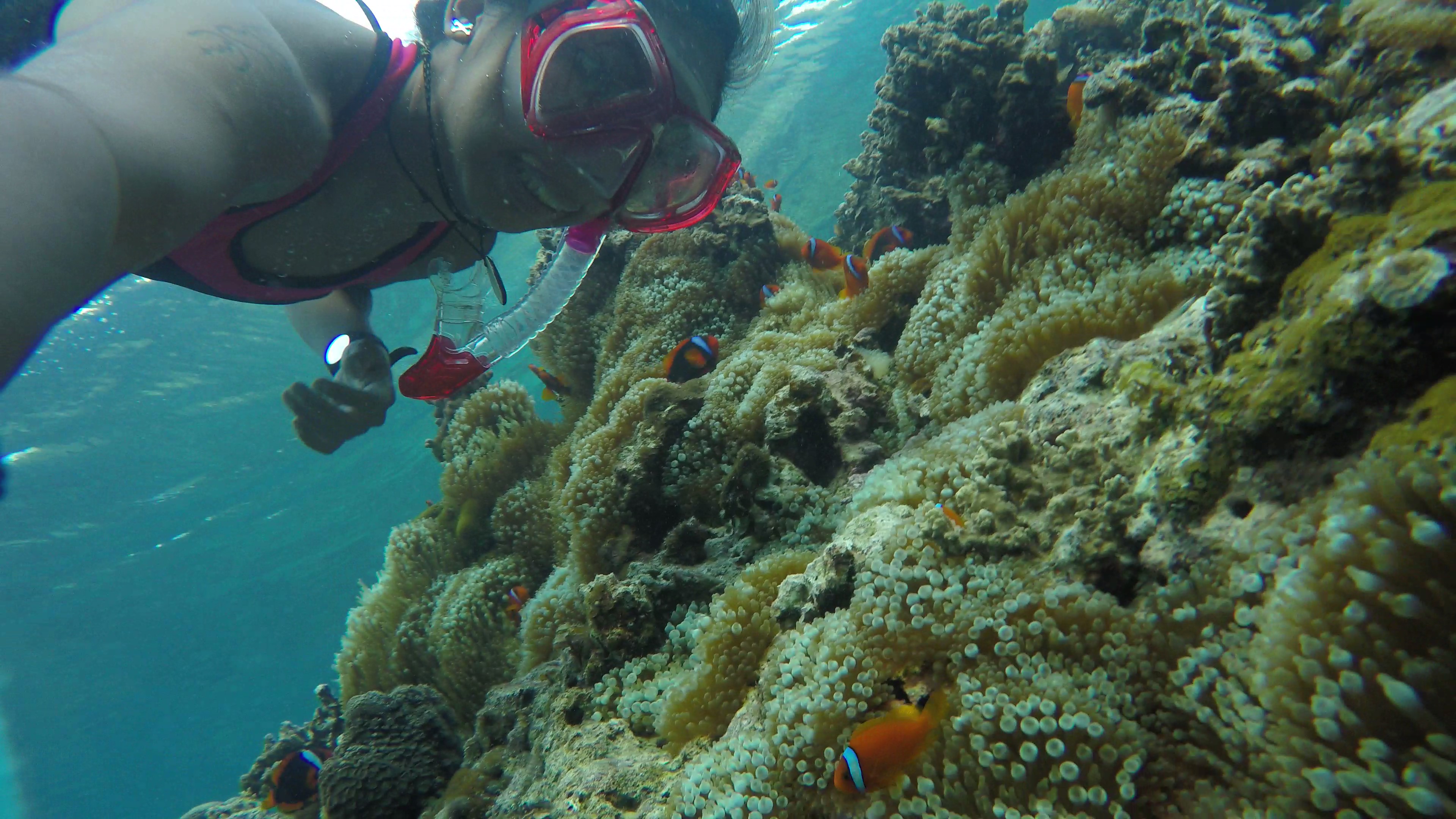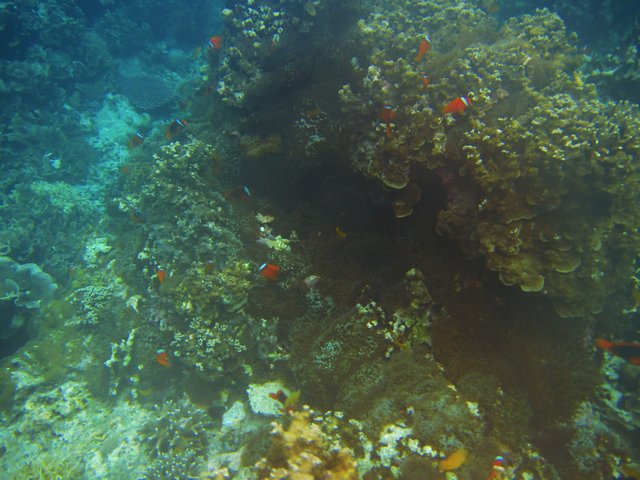Finding the Real Nemo: Ecology of Sea Anemones and Anemonefishes
Finding Nemo
If there was one fish species most kids around the world would know, it would definitely be the clown fish. Thanks to the award-winning, top-grossing, animated film, Finding Nemo.
Let's cut to the chase. The image of Nemo that the film introduced to us is actually a real individual species of fish. Apparently, it isn't what marine biologist would regard to as the clown fish species. If at all, Marlin and Nemo are actually false clown fishes!
There is no need to fuss, however, because English or common names are not the scientific basis in identifying individual species. The technical way of naming species is using the Latin binomial, which includes the genus or genera name and then the species name. For example, modern humans are called Homo sapiens, where Homo is the genus and sapiens is the species name.
My point is that you can call Nemo a clown fish or a false clown fish and it may or may not be acceptable depending on whether you are talking to a kid or to a fish enthusiast, but the aim for accuracy lies in calling every fish, every organism with its correct binomial name.
When I was teaching marine biology at Coral Cay Conservation, a lot of our volunteers and trainees didn't know why Nemo was named so. Neither did I at first. There is actually a scientific background to that and most people would realize after learning a bit of the fish's ecology.
See if you can find out for yourself why the character was named Nemo.
 |
Symbiotic Relationship on the Reef
Clown fishes are also commonly known as anemonefishes because they have a symbiotic relationship with the cnidarian anemone (pronounced as a-nem'e-nee). Anemones are basically inverted cousins of the jellyfishes. Imagine turning the jellyfish upside down and putting it in a fixed position on the reef where its body is planted on a substrate and its tentacles extend upwards and flow with the current. That's how an anemone looks like. And if you're still not sure, go snorkeling some time and if you spot a clown fish, try to look around for an anemone nearby. All anemone fishes live in an anemone but not all anemones have anemone fishes in them.
Anemones, just like jellyfishes, have stinging tentacles that could adversely affect humans and other organisms when touched. However, the anemone fishes have adapted to the anemone's sting so that they can live inside it without getting killed by the nematocysts or stinging cells. The fish cleans the anemone as it serves to be its home while the anemone provides protection for the fish against predators. The anemone also gets food from the fish's feces. Apparently, it is the anemone that protects juvenile anemone fishes and not the parents.
If you take the fish away from the anemone, both parties are at risk. I personally go against putting reef fishes in aquariums. Some enthusiasts would put both the fish and the anemone in a tank or aquarium so they can keep their symbiotic relationship but that for me is just plain heartless. In my opinion, it is a selfish act to take wild animals out from their natural habitat just to provide you with entertainment or a sense of ownership. If you want to see anemone and anemone fishes, just learn how to dive, please.
I hope that after reading through those paragraphs, you can already tell why Nemo was named so.
Social Groups
Anemone fishes live in social groups within their anemones. They are dominated by one large female with a smaller sexually active male. They are also joined by a few smaller males and juveniles. Anemone fishes are hermaphrodites which means they start out as males and then become females as they mature. The dominant female is at the top of the hierarchy, followed by the sexually active male, and then the smaller males. Once the dominant female dies, the partner male turns into a female and everyone moves up one notch in the hierarchy.
Let me now go ahead and introduce you to some of the anemone fish species I have met in my life. All photos here were taken by me in three different reefs namely, Napantao in Sogod Bay, Southern Leyte, Moalboal in Cebu Province, and Talima Sanctuary in Mactan, Cebu. There are up to thirty different known species of anemone fishes and I will be introducing you to five of them. There are thousands of anemone species but only ten are capable of having a symbiotic relationship with anemone fishes.
Apparently, fishes are tricky creatures to photograph. They swiftly move around and without good, expensive equipment, photos always result to motion blur. I have added photos in few angles so you get the idea of how each species is different from each other. Fortunately, anemone fishes are very protective of their anemones so when they see a diver approaching, they would aggressively jolt towards the diver as if to scare them away. That is why it is common to see photos of anemone fishes looking straight into the camera lens.
Amphiprion ocellaris
I hope you would agree based on this photo that Nemo is an Amphiprion ocellaris. Commonly known as the false clown fish or the false percula, they are considered to be one of the most attractive reef fishes. Given that, they are very common in aquariums and tanks because of their attractive bright orange color and white markings. The real clown fish is known as the Amphiprion percula which is unfortunately not common in the Philippines.
Amphiprion clarkii
The Amphiprion clarkii or Clark's anemone fish has black body with two white bars. Its snout and fins range from yellow to orange. Among the different species of anemone fishes, Clark's anemone fish is the only one who can live in up to ten different species of anemone. Paler variations of this species have been found as their coloration could be influenced by their host anemone.
Amphiprion melanopus
The Amphiprion melanopus or the Red and Black anemone fish possesses a darker range of colors on its body. It has one white bar on the head and the eyes are dominantly black. Its young would start out orange and red. They can live with three different species of anemones.
Amphiprion perideraion
The Amphiprion perideraion is also known as the pink anemone fish, obviously because of its body color. The shade would range from pink to pale orange with a distinct white bar on the head and white dorsal marking from between the eyes to the tail. They can be hosted by four different anemone species although most commonly found on a species called magnificent anemone.
Premnas biaculeatus
Premnas biaculeatus, taken at Napantao Reef, San Francisco, Southern Leyte, Philippines (photo owned by author)
The Premnas biaculeatus is also known as the spinecheek or maroon anemone fish and is the only species of anemone fish under the genus Premnas (all others are under the genus Amphiprion). They have three white bars and a pair of spines on the cheeks. Males would have a body color of bright orange to red and grow to only about 3 inches. Females however grow to up to twice the size of the males and have dark red to maroon body color.
I hope to meet the rest of the anemone fish family in my future dives so I can continue introducing them to you. Meanwhile, let's focus on making the ocean and the reef a better place for them to live in. Keep our beaches healthy and avoid using plastic products that eventually get washed into the sea. Moreover, please do not support putting reef fishes in fish tanks and let them live freely in the wild.
 |
Information on this blog post was taken from the book:
Reef Fish Identification - Tropical Pacific by Allen, Steene, Humann, and Deloach, Published in Jacksonville, Florida, USA, First Edition - 2003
I hope you have learned something new today.
Best fishes,
Xayd
Wow! Grabe, @xaydtrips! Extensive. Hands down gyud ko nimo ani.
Thank you @ybanezkim26! I just really enjoy sharing knowledge.
Super cool post! In order to be eligible for potential upvotes from steemSTEM, though, you need to add your reference/bibliography and link to the source of your photos- or at least note down if they're yours.
Wow! Thank you for recognizing my post @mountainwashere! Edited to include my reference (which is an actual book) and indicated that all photos are mine and taken during multiple dive trips :D
Awesome! I was pretty sure they were yours- now I'm just super impressed at their quality. As far as I'm concerned, Steemit could use a lot more posts about the ecology of the ocean, or just the ocean in general. (Of course, I did a 14 part series on the ocean last month and have been a nautical nerd my whole life, so I'm a bit biased.)
Wow! this is very educational, this is the first time I was interested about marine biology. Stay cool!
Thank you! Stay tuned for more nature posts!
I'm trying to remember what were the kinds of of anemone fishes we saw in Coron. I might have seen 2 or 3 or more kinds. Is that possible?
Yes, definitely. Most of these I've seen in just one dive. I find that A. melanopus is the most common. 😊
You received a 10.0% upvote since you are not yet a member of geopolis and wrote in the category of "ecology".
To read more about us and what we do, click here.
https://steemit.com/geopolis/@geopolis/geopolis-the-community-for-global-sciences-update-4
Thank you for the feature @geopolis! Cheers to more global science knowledge on steemit! :D
Your self votes will be countered by @sadkitten for 1 week starting Tuesday, April 10th 2018, 7:58 because your account is on of the highest self voters. For more details see this post.
Thank you for checking things like that. I truly support the initiative. But I must let you know that we are a curating group supporting authors who write in the field of global sciences. We lease SP from the market and we use that to reward good writers on the platform. Sadly our rewards are not big enough to sustain this leasing and we have to self vote our posts in order to maintain a reasonable amount of Steem Power. We are fully aware that we are amongst the most self voting accounts but all these rewards are used to lease SP and to reward other authors.